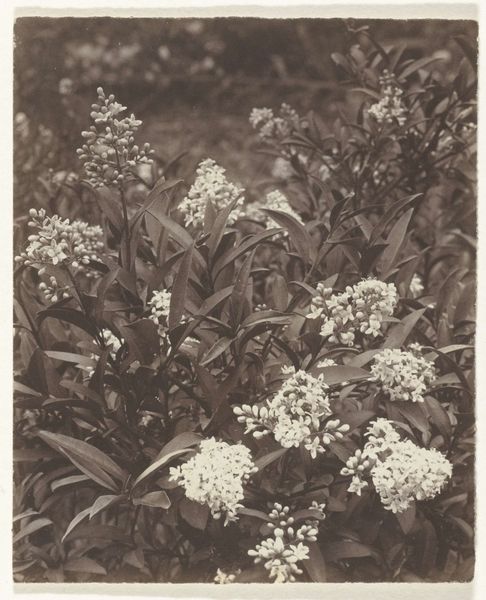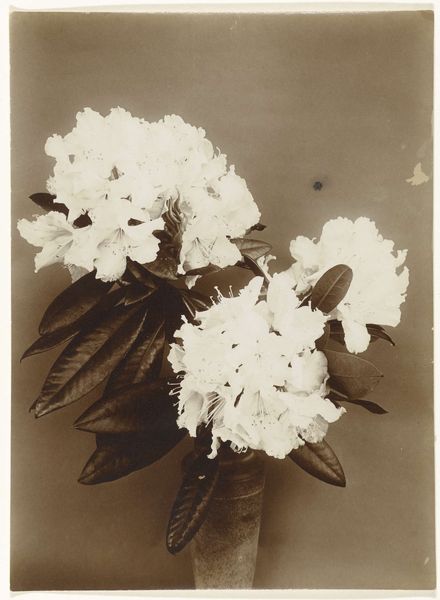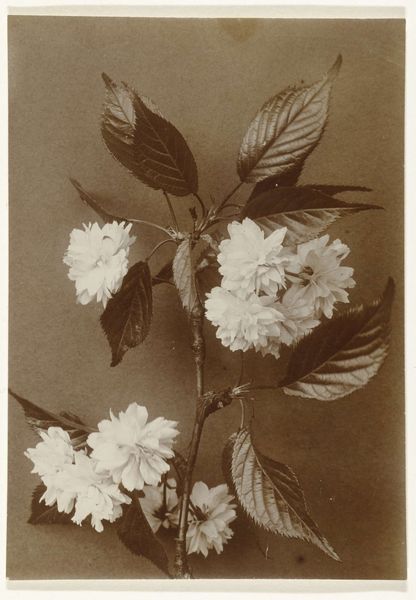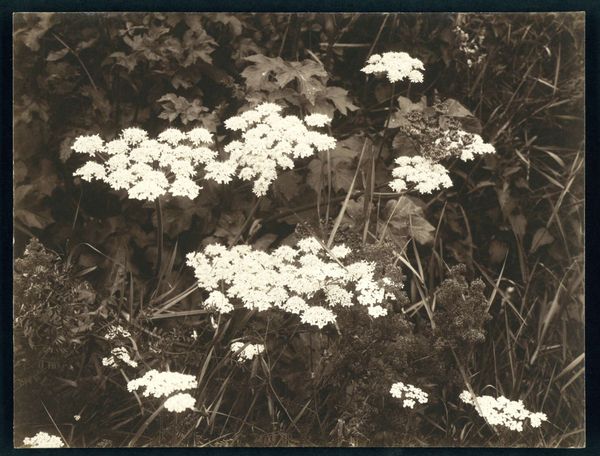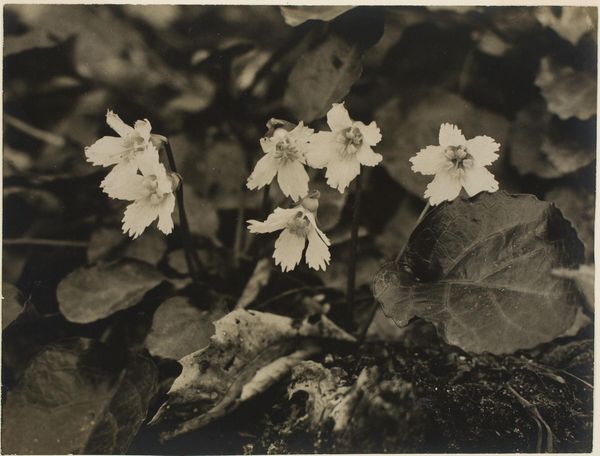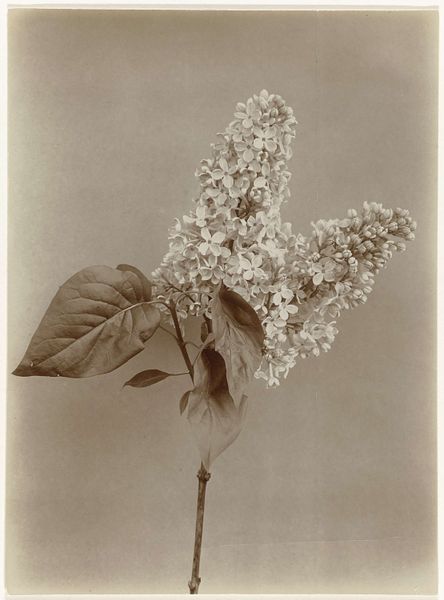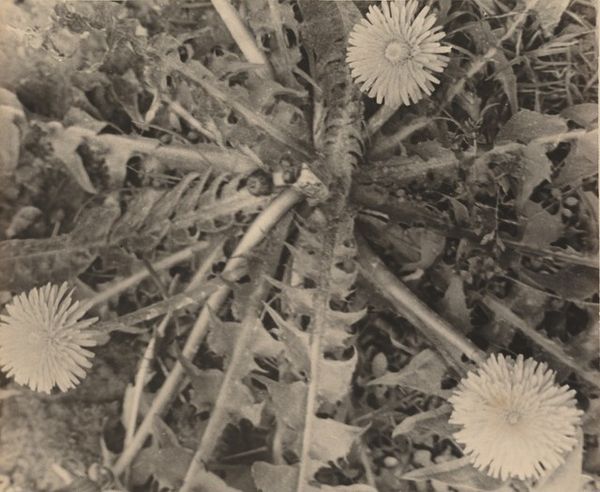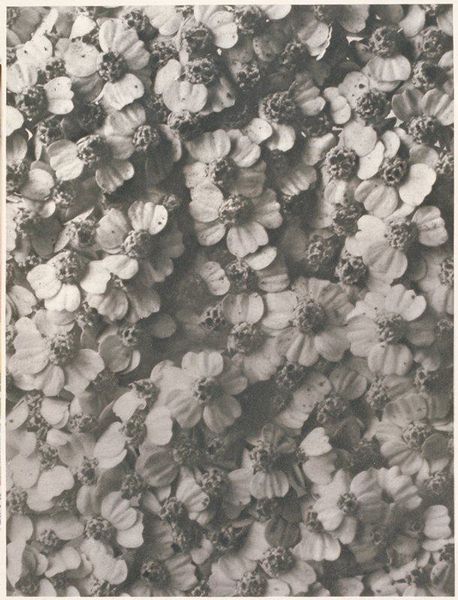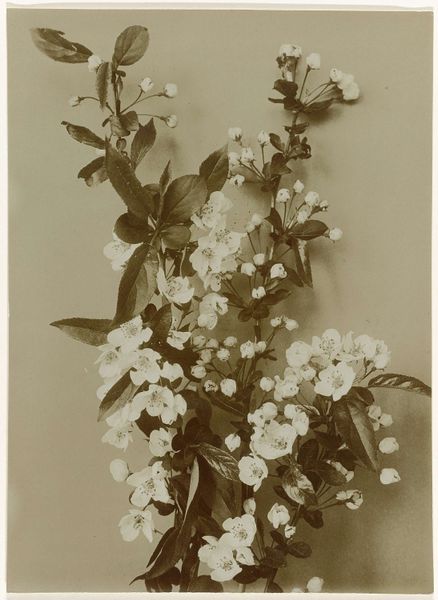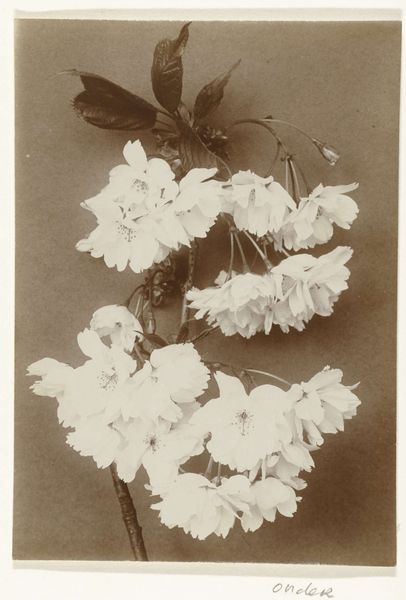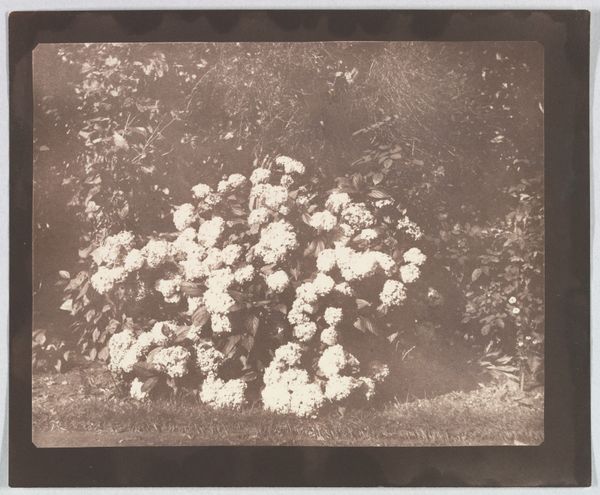
photography
#
vegetal
#
natural world styling
#
natural tone
#
natural photography
#
pollination
#
landscape
#
natural composition
#
natural colouring
#
photography
#
appetizing
#
botanical photography
#
nature friendly
Dimensions: height 170 mm, width 228 mm
Copyright: Rijks Museum: Open Domain
Curator: This photograph, titled "Bloeiende koffieplant (Robusta), voormalig Nederlands-Indië," captures a robusta coffee plant in bloom, likely taken between 1890 and 1911 in what was then the Dutch East Indies. The photographer is Onnes Kurkdjian. Editor: Okay, so first impression? Dreamy sepia tones... it's like a memory trying to bloom. You can almost smell that rich, earthy scent. Makes you wanna reach out and touch those blossoms, doesn't it? Like, imagine what stories those leaves could tell... Curator: Absolutely, that evocative feeling is powerful. But it's essential to recognize the complex historical layering at play here. The image is not just a botanical study, it also invokes the colonial history of coffee production and trade. Editor: Oof, right. Suddenly the dream turns a little bitter. I see it now. It's pretty, yeah, but loaded. The Dutch East Indies… that whole exploitative thing, turning nature into a commodity. Curator: Precisely. And this image, while seemingly neutral, plays into the colonial narrative of exoticizing the landscape. Think about who the intended audience was – most likely Europeans who wanted to romanticize the idea of the colonies as fertile paradises. Editor: So, not exactly a neutral snapshot then? It’s kind of like sugarcoating the, uh, less savoury bits of history? Curator: Indeed. The natural beauty depicted obscures the exploitative labor practices that sustained the coffee trade and colonial rule in the Dutch East Indies, so it requires careful engagement and not simple admiration of its aesthetics. Editor: Right, makes sense. Next time I sip my coffee, I'm gonna be thinking about this image. Adds a whole new layer, a responsibility, I guess, to know where it comes from. Kinda takes the simple pleasure down a notch, but for a good reason. Curator: Yes, grappling with art like this asks us to challenge those ingrained associations between places, things, and power. Hopefully it inspires continued interrogation and conversation around representation and social power.
Comments
No comments
Be the first to comment and join the conversation on the ultimate creative platform.
